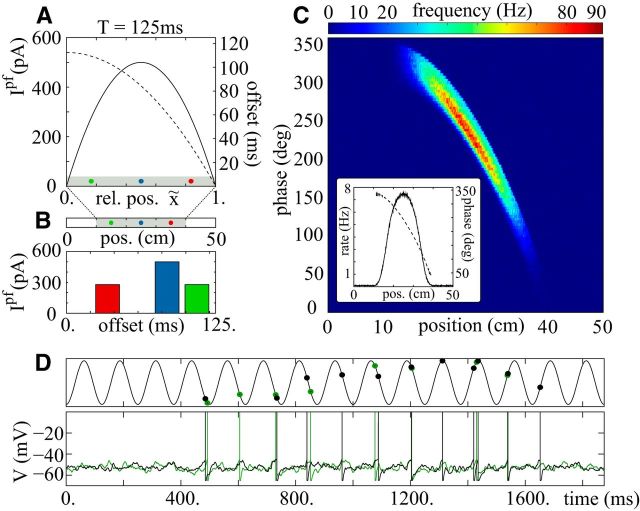Figure 3.
Place tuning and phase precession of single cells. A, When the actual position x is within the place field of a neuron, rectangular current pulses are injected to the neuron. Their amplitudes Ipf (solid, left vertical axis; Eq. 16) and temporal offsets (DT) with respect to the background theta rhythm (dashed line, right vertical axis; Eq. 17) are functions of the relative position (rel. pos.) x̃ in the place field (compare Eq. 15). B, Examples of the current pulses for a place field, P = [10, 40] cm, and the positions x = {15, 25, 35} cm. The positions in the place field are shown in the top subpanel; the resulting input currents are shown in the bottom subpanel. C, The main panel displays the resulting spatiotemporal receptive field. The inset shows the average firing rate (solid; left vertical axis) and average phase shift against the theta rhythm (dashed; right vertical axis) as a function of the current position. The neuron increases the firing rate for positions within the place field and shows phase precession. D, Bottom, Two example membrane voltage traces during the traversal of a place field of a neuron with the characteristics summarized in C. To indicate the spikes, voltage excursions to Vmax = 0 mV are added to the membrane voltage whenever a spike is generated. Top, The (virtual) theta rhythm; the dots indicate the spiking times of the considered neurons. The place field has a width of Δw = 30 cm, and it is traversed in jumps of Δx = 2 cm per theta cycle (i.e., v = 16 cm/s). For further details, see Materials and Methods.

